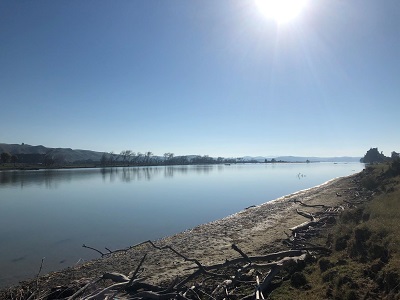
Current filter:

Hawke’s Bay’s estuaries will benefit from a recommendation to target policy around their management, according to the Regional Council.
The Managing our Estuaries report by the Parliamentary Commissioner for the Environment, Simon Upton, has highlighted the complexity around management of the country’s estuaries.
It recommends estuaries, and the waterways that feed them, should be treated as a single entity, from the mountains to the sea.
Hawke’s Bay Regional Council Chief Executive James Palmer welcomes the proposal to tighten up national policy around estuaries.
“The Parliamentary Commissioner recommends that estuaries become part of the Freshwater Management Units under the National Policy Statement for Freshwater Management. This is a good proposal as it means work would be prioritised nationally on linking freshwater limit setting to estuary health,” he says.
Mr Palmer says this complements the Action for Healthy Waterways policy reform package announced earlier this year, which aims to clean up rivers, lakes, streams and wetlands.
“The proposals in this report, and the Action for Healthy Waterways package would accelerate current efforts to improve the region’s freshwater and enable stronger, more targeted management for estuaries,” says Mr Palmer.
Regional Council Marine and Coasts team leader, scientist Anna Madarasz-Smith, says many of the estuaries in the region are showing signs that there is too much sediment entering them from the surrounding catchment.
“We are working with landowners to reduce sediment loads to our estuaries, but need better science nationally around how we link these reductions to better outcomes for our estuaries,” she says.
The land and river network of Hawke’s Bay terminate at the numerous large estuaries of Pōrangahau, Tukituki, Waitangi, Ahuriri, Wairoa and Maungawhio.
Mrs Madarasz-Smith says they are significant areas and have extensive ecological, cultural, social and recreational values, but are sensitive to the combined impacts from the land and freshwater systems.
“Many of the smaller systems wind through catchments to make their way to the coast delivering sediments and nutrients to the coastal area. Although these systems comprise a small percentage of the overall coastal area, they make an important ecological contribution,” she says.
Hawke’s Bay Regional Council Te Pou Whakarae Pieri Munro welcomes the recommended inclusion of marine species in the definition of mahinga kai.
“Many of our taonga species spend time in both marine and freshwater habitats, and estuaries are an important source of kai. The recommendation highlights the need to manage our waters to protect these values,” he says.
13 August 2020
Disclaimers and Copyright
While every endeavour has been taken by the Hawke's Bay Regional Council to ensure that the information on this website is
accurate and up to date, Hawke's Bay Regional Council shall not be liable for any loss suffered through the use, directly or indirectly, of information on this website. Information contained has been assembled in good faith.
Some of the information available in this site is from the New Zealand Public domain and supplied by relevant
government agencies. Hawke's Bay Regional Council cannot accept any liability for its accuracy or content.
Portions of the information and material on this site, including data, pages, documents, online
graphics and images are protected by copyright, unless specifically notified to the contrary. Externally sourced
information or material is copyright to the respective provider.
© Hawke's Bay Regional Council - www.hbrc.govt.nz / +64 6 835 9200 / info@hbrc.govt.nz